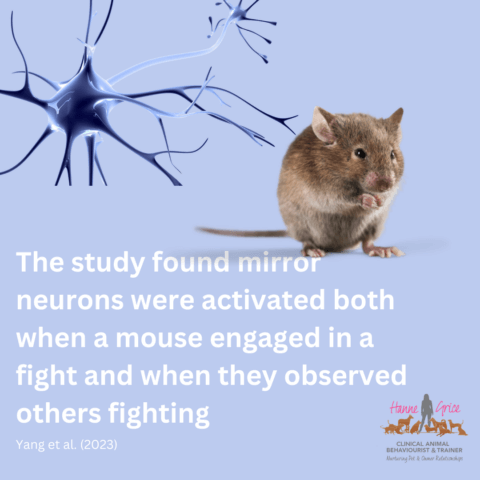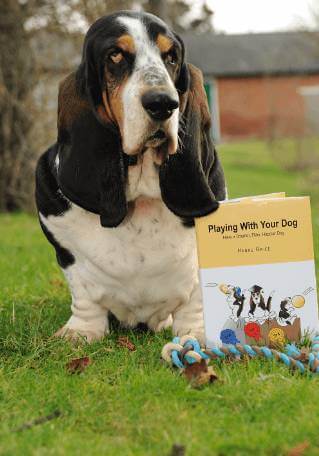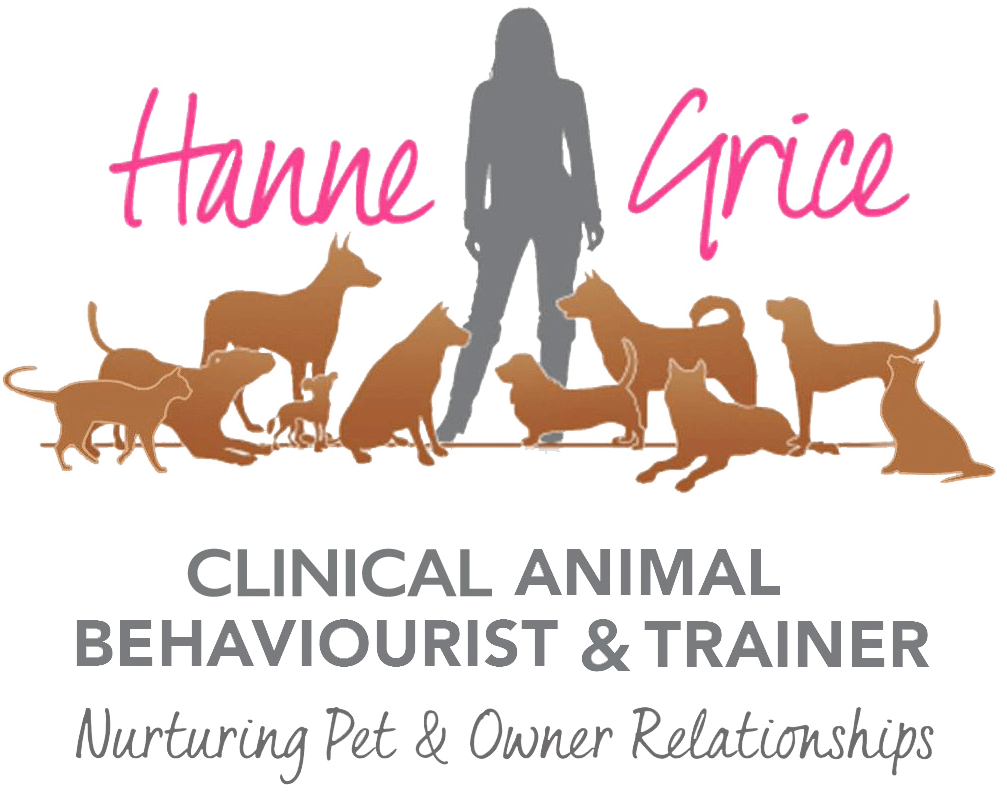A recent study has revealed a fascinating aspect of animal behaviour, particularly focusing on aggression and its perception among animals.
Researchers from Stanford Medicine, explored how animals perceive aggressive interactions among their peers. Their study, published in Cell, with mice discovered that certain neurons in the hypothalamus, an ancient part of the brain, are active both when a mouse engages in a fight and when a mouse observes others fighting (Yang et al., 2023). These neurons are termed ‘mirror neurons’ due to their dual role in both performing and observing the same behaviour.

This discovery is significant for several reasons:
- Mirror neurons in mice: This is the first time mirror neurons have been identified in mice, particularly in the hypothalamus, suggesting a more primal origin for these neurons than previously thought.
- Aggression assessment: These neurons are not just for triggering aggression but also seem sensitive to a mouse’s social environment. They play a role in assessing the type of aggressive situation the animal is in.
- Innate tuning to aggression: Interestingly, these neurons are innately tuned to aggression, even in mice that have never witnessed or engaged in aggressive behaviour.
What do we know about mirror neurons in humans?
The discovery of mirror neurons in mice, parallels findings in human neuroscience. Mirror neurons, first identified in primates during the early 1990s, are known to activate in humans both during the execution and observation of actions, suggesting a neural basis for empathy and social learning (Rizzolatti and Craighero, 2004; Iacoboni et al., 1999). Neuroimaging studies, such as fMRI and PET scans, have reinforced this concept by showing activation in specific brain areas during both action and observation (Gallese et al., 1996). This occurrence underpins crucial aspects of human behaviour, including imitation, empathy, and the understanding of others’ intentions, which are essential for social interaction and cognitive development. The study of mirror neurons in mice, therefore, not only sheds light on animal aggression but also offers insights into the evolutionary and neurological continuity between humans and animals in social cognition and behaviour.
What are the implications for animal carers?
Understanding the role of mirror neurons in aggression can be particularly insightful for animal carers when we consider our pets, such as cats and dogs:
- Observational learning: Just like the mice in the study, cats and dogs may also learn and assess aggressive behaviours by observing others. This could have implications for socialisation and training. Research on dogs has shown that they are capable of imitative learning, which could be linked to mirror neuron activity (Huber et al., 2009).
- Innate vs. learned aggression: The study suggests that some aspects of aggression are innate, encoded in the brain. This could help explain certain aggressive tendencies in pets that are not directly linked to their environment or upbringing. In cats and dogs, for instance, aggressive behaviour can sometimes be attributed to genetic factors (McLean et al., 2019; Overall, 2013; Zapata et al., 2016a; Zapata et al., 2016b) which may then be initiated and maintained by the animal’s stage of development, health status, environment, learning experiences and so on.
- Behavioural Management: Understanding the neurological basis of aggression can aid in developing more effective behavioural management strategies for pets showing aggressive tendencies. Where carers are experiencing such issues, then it is critical to have the animal examined by their veterinarian and engage the support of a registered Clinical Animal Behaviourist.
The Stanford study opens new avenues in understanding the neurological underpinnings of aggression in animals. As we continue to explore the complexities of animal behaviour, such insights are invaluable in enhancing our approach to animal care, training, and welfare, especially for domestic animals.
References
- Gallese, V., Fadiga, L., Fogassi, L. and Rizzolatti, G. (1996) ‘Action recognition in the premotor cortex.’ Brain, 119(2), pp.593-609
- Huber, L., Range, F., Voelkl, B., Szucsich, A., Virányi, Z., & Miklósi, Á. (2009) ‘The evolution of imitation: what do the capacities of non-human animals tell us about the mechanisms of imitation?’ Philosophical Transactions of the Royal Society B: Biological Sciences, 364(1528), pp:2299-2309
- Iacoboni, M., Woods, R.P., Brass, M., Bekkering, H., Mazziotta, J.C. and Rizzolatti, G. (1999). ‘Cortical mechanisms of human imitation.’ Science, 286(5449), pp.2526-2528
- MacLean, E.L., Snyder-Mackler, N., VonHoldt, B.M., Serpell, J.A. (2019) ‘Highly heritable and functionally relevant breed differences in dog behaviour.’ Proc Biol Sci., 286:20190716. doi: 10.1098/rspb.2019.0716
- Overall, K.L. (2013). Manual of Clinical Behavioral Medicine for Dogs and Cats. St. Louis, MO: Mosby
- Rizzolatti, G., Craighero, L. (2004) ‘The mirror-neuron system.’ Annu Rev Neurosci., 27, pp:169-92. doi: 10.1146/annurev.neuro.27.070203.144230
- Yang, D., Bayless. W., Yichao, W., Landayan, D., Marcelo, i.m., Yangpeng, w., DeNardo, L.A., Luo, l., Druckmann, s., Shah, N.M. (2023) ‘Hypothalamic neurons that mirror aggression.’ Cell, 186(6), pp:1195-1211. doi.org/10.1016/j.cell.2023.01.022
Learn more about our classes

Get Hanne's book, clothing and more
Hanne has a number of publications including her book Playing With Your Dog to help owners work out the games that are best suited for their pet to play throughout his life, from puppyhood to old age, available from Amazon. Check out Hanne's range of contemporary casuals The Collection – for pet lovers made from recyclable, organic materials that are sustainably sourced.

